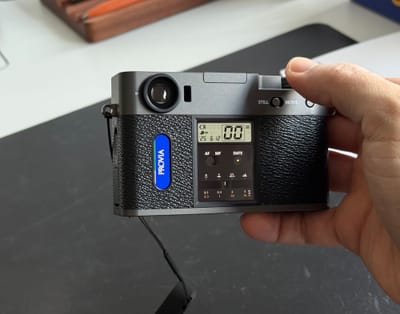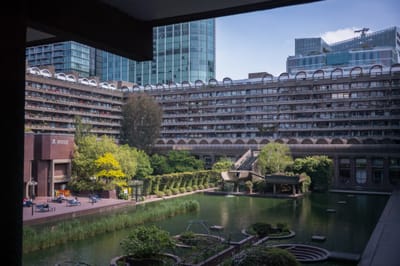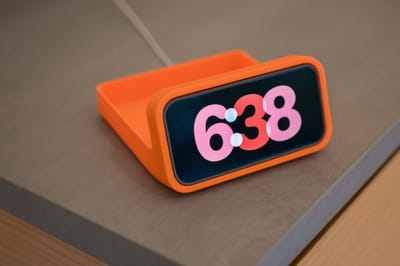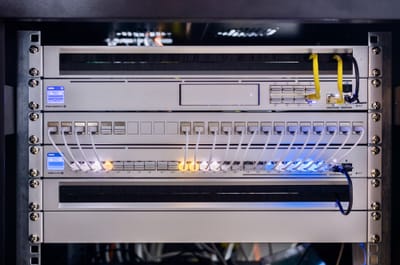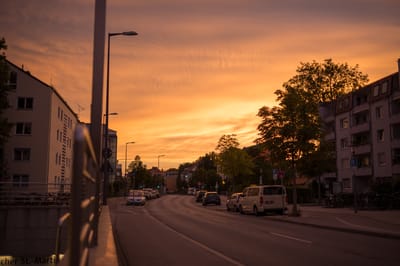From Fujifilm to Leica: My Experience with the M11
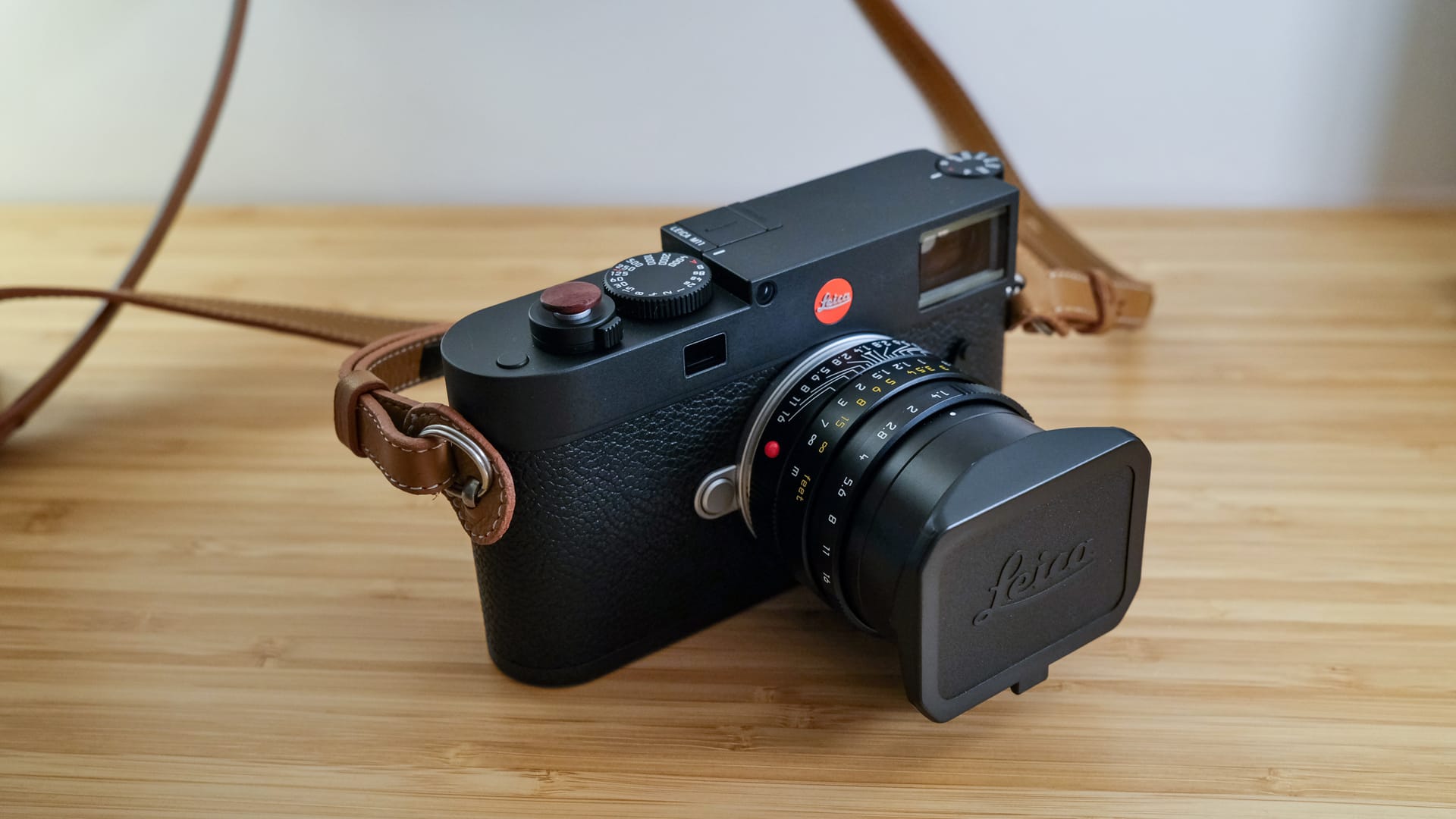
Photography is a hobby and a passion. I love going out, walking in the streets, and shooting photos of people, interesting architecture, or landscapes.
Since my teenage years, I have always had a camera. My first one was from Aldi, a German grocery chain. I think I was then around 15/16 years and didn't know anything about cameras. When I saw the Ad, I begged my father to buy it. The brand was "Medion", and I shot many photos and videos. There I knew I loved shooting photos.
After using it for several years, my father bought me a Canon G7, a point-and-shoot camera. This was another camera I insisted my father get for me. When a newer version of it came to the market, the older one was discounted, so we got it for cheap from Saturn (a German electronics store chain). It was black, and I felt like I was using a professional camera for the first time. It was a decent camera, much better than the Medion. Still, it wasn't a DSLR or in the same ballpark, but it made me happy.
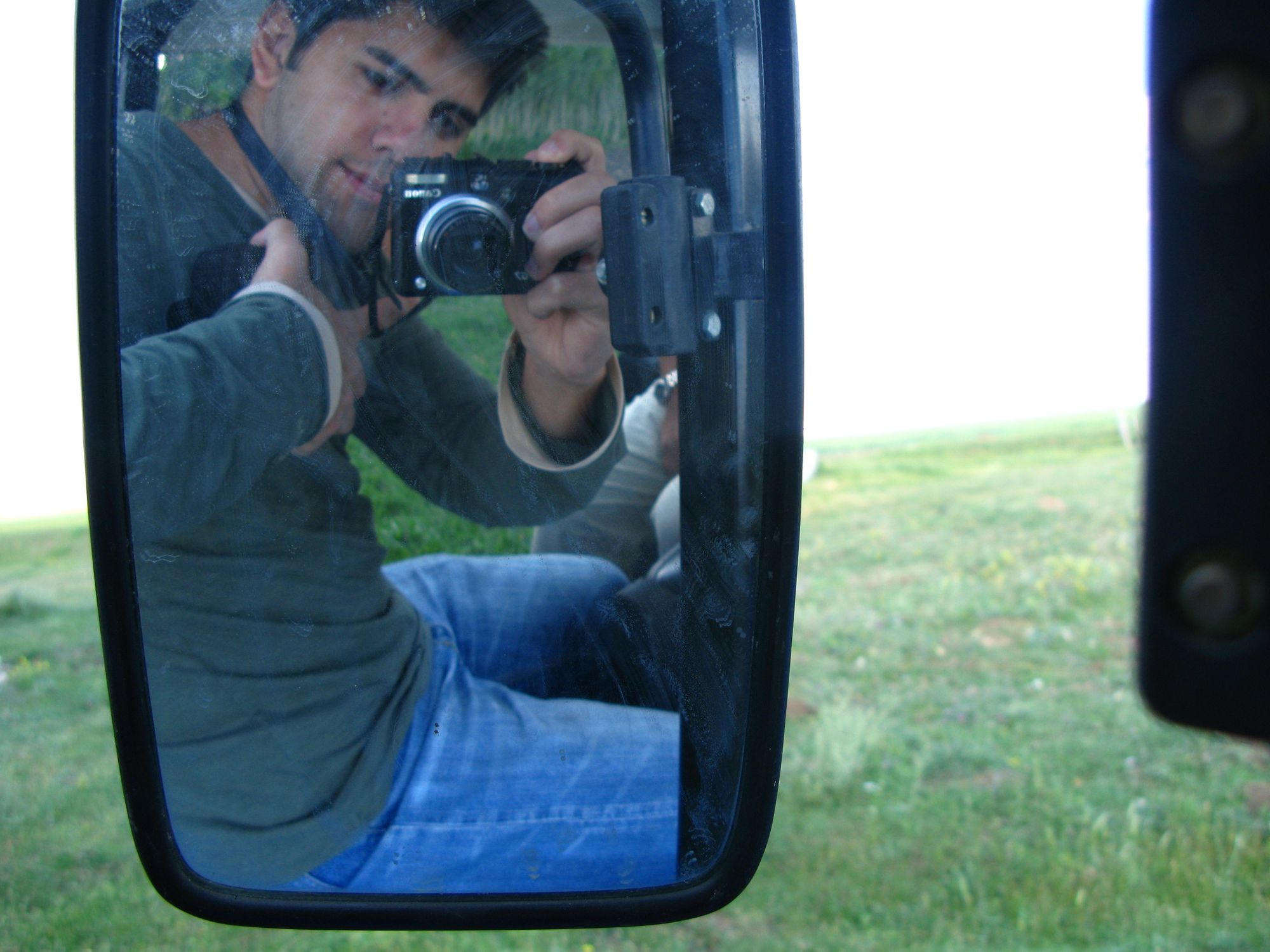
Once I left the university, I started working and, with that, started earning money. After numerous years of work, I saved enough money before my Japan trip, so I pulled the trigger and bought a FujiFilm X-T1. It was my first real camera. Subsequently, I was obsessed with cameras, especially using FujiFilm cameras. Since then, I have had several Fuji cameras, such as X-H1, X100F, and X-T30. My final Fujifilm camera was the X100V that I bought two years ago.
Using all kinds of different cameras taught me how to shoot, but also I found out what I'm interested in shooting. Looking back at my photos, I discovered I love to take pictures of architecture, landscapes, and people (street photography). The Fuji X100V hence was the perfect camera for my style.
The time has come
Time flies. There are only so many things my family and I will witness. I'm also old enough that I didn't want to prolong my decision any longer.
My love for photography is in its prime. With that, for a long time, I thought about the switch to a Full-frame camera system and further strengthened my skills, especially doing more landscape, architecture, and street photography.
I never bought a professional Canon, Nikon, or Sony because I never found a specific reason to switch to those brands from Fujifilm. The only brand/model that interested me was the Sony RX1R II, but Sony never released a newer version.
Otherwise, all these brands have excellent cameras, and on paper, they are incredible. Lots of professionals use them for their job. But I never liked their designs, menus, or the feel of using them (yes, I've used most of these brands on plenty of occasions). Even the newer mirrorless cameras are clunky and big. You can't blend into the crowd with a big camera.
Hence, I started looking at how to make one of my dreams come to life: owning and using a Leica M Rangefinder camera.
Leica's are not cheap (more on this later), but behind the name is a long history of people making the best cameras in the world, with the best photographers witnessing history (i.e., Ara Güler) while wearing and shooting with Leica Rangefinder cameras. I want to be part of this culture and craftsmanship, and the ethos behind the Leica community is something that speaks to me.

So, I pulled the trigger and got my first Leica Camera, the Leica M11. It's their latest digital rangefinder camera. I searched for a second-hand Leica M10-R but couldn't find anything here in Turkey. So, when I had an upcoming trip to Germany, I decided that's time to get the camera body.
Leica Türkiye had ongoing sales for the lens. My all-time favorite lens (I've probably viewed thousands of pictures of various Leica lenses), the Summilux 35mm f/1.4 FLE, was discounted significantly. It's not the newer 2022 version, but I didn't need any close-up photos, so I decided to buy it here.
The Leica M11
The Leica M11 is Leica's latest digital Rangefinder (I'll tell more about the rangefinder technology in more detail). There are tons of reviews, so I don't want to go into every detail (i.e., DPReview Leica M11 Review).
What essential for me to was when picking up the Leica M11 was its 60MP resolution, USB-C connector, battery life, and internal 64GB storage. The processor was also upgraded. I honestly wanted to get a second-hand Leica M10-R because it already has 41MP resolution and is a great camera, but as I said earlier, I couldn't find any second-hand ones here in Turkey.
You might ask why not the M10 or M10P. They are older, and the resolution is also way lover than the M10-R or M11. The sensor resolution is essential because I want to print my photographs in the future, and I also do quite a bit of cropping in my photos. Using the Leica M11 now for several weeks; the 60MP is incredibly useful, and I love it.
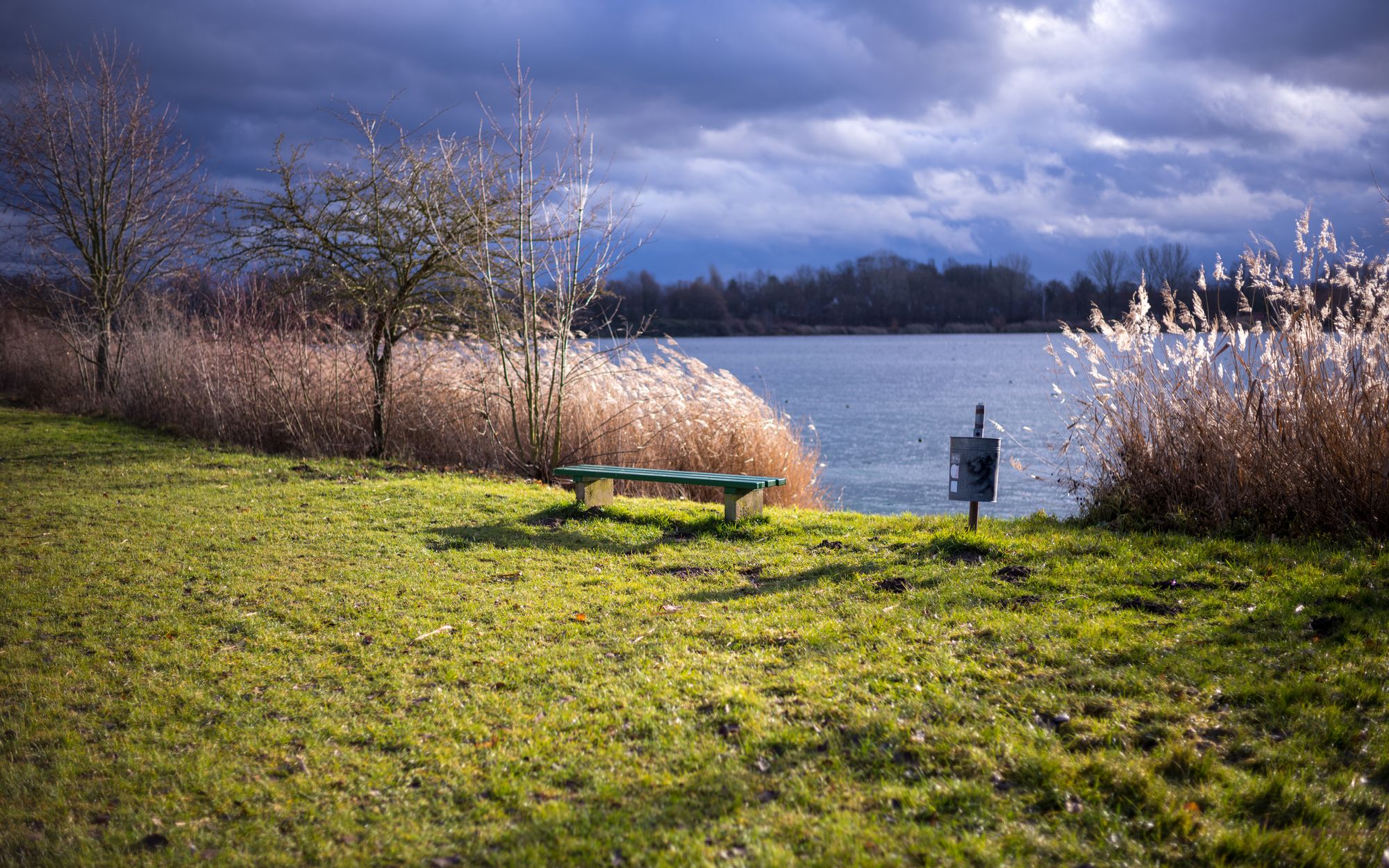
The USB-C connector also comes in handy because it allows me to travel hassle-free with a single USB-C charger everywhere. I hate to carry additional cables. Except the iPhone, all my devices use USB-C. Next, the battery life had to be good enough to take it for a whole day without needing a second battery. I hate to carry additional batteries as well. Charging them is even more annoying, as I have to take an extra charger. The Leica M11 has a new battery with a 64% capacity increase compared to the battery in the M10. According to the technical specs, you can shoot 700 pictures, and in my day-to-day field trips, I witnessed the improvement.
Lastly, a couple of times, I forgot to put my Fuji's SD disk back into the camera and left the house that way. Bummer. It happens. The Leica M11 has internal 64GB storage. It's great for two reasons: when I forgot to take my SD card and for redundancy. You can configure the M11 to copy the RAW files simultaneously to the SD card and the internal storage. Even in the event of an SD card failure, I still have a backup of my photos.
Summilux 35mm f/1.4 Lens
There are many Lens options for the Leica M11 due to its famous M-mount. Leica itself provides the best lenses your money can buy, but you don't have to; there are also other brands, such as Voigtländer, Zeiss, 7Artisans, etc.
I also had to decide on the lens when I wanted to get a Leica Rangefinder camera. The lens is even more important than the body because you can use it for decades if you take care of them. First, the most significant part is which focal length I want to use. Luckily, I knew immediately what to get because I had shot in various focal lengths for a long time. It was 35mm. I shoot in 28mm and 50mm full-frame equivalent lenses, but they were either too wide or too near for my liking.
Once I decided on the focal length, I had several options. I wanted a Leica Lens because I wanted to be fully in the Leica world. But not only because of that, but one of my favorite photographers and writer, Craig Mod, was also using a 35mm Leica Lens. I also know that Leica Lenses were some of the best you can get on this planet, so I had to get one.
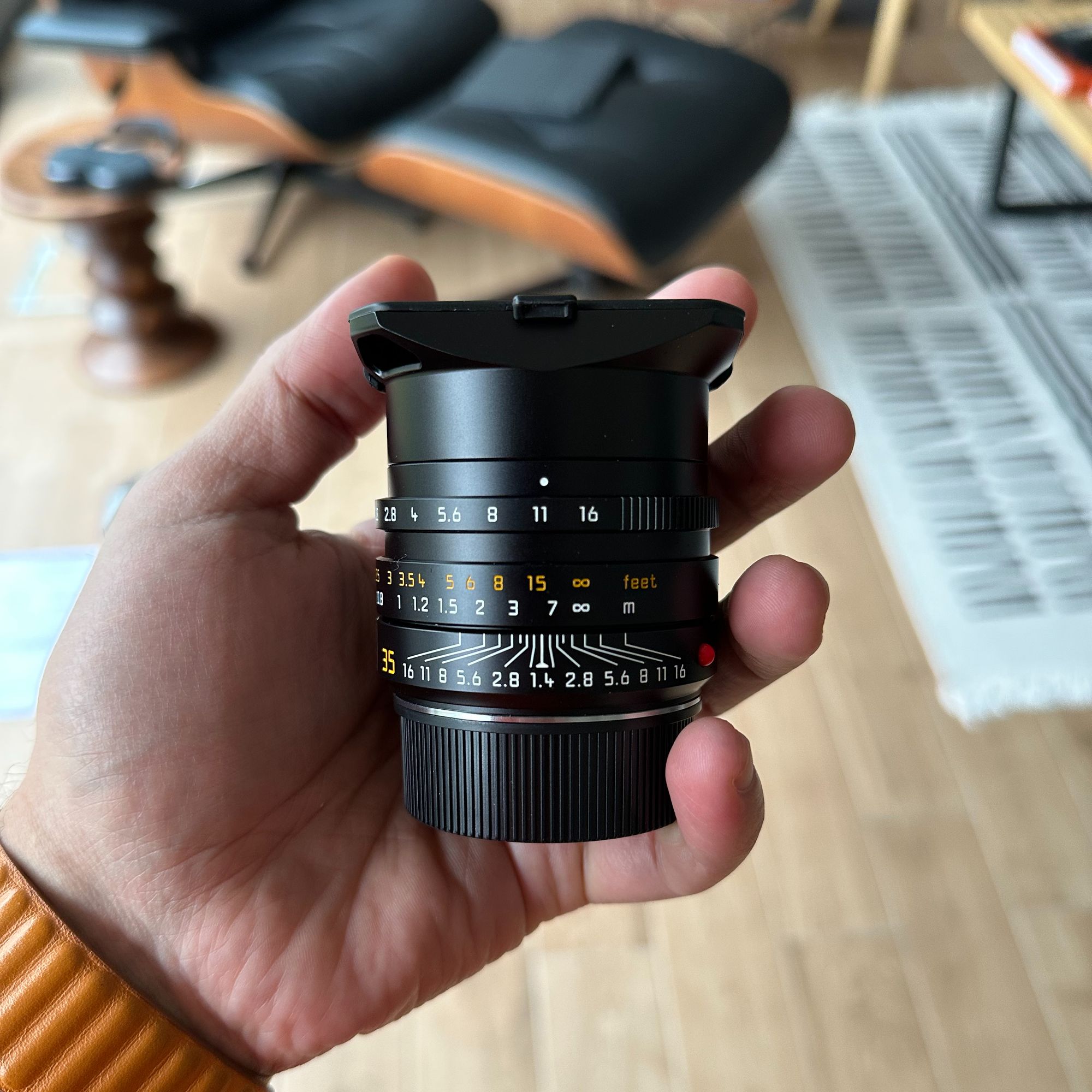
There are various 35mm Leica lenses. Some are the Summarit, Summicron(s), or Summilux lines of lenses. I initially decided to get the Summicron, but when I saw the discount on the Summilux, I couldn't pass it. The Summilux 35mm f/1.4 is an extraordinary lens. Especially wide open, it's incredibly sharp. I never used a lens like this. There is some vignette at F/1.4, but I love the look of it. For the first time, I could witness the Leica Look and shoot photos where the subjects are like 3D objects. I didn't see any bad reviews about this lens, which further consolidated my desire to get it. And I wasn't wrong.
Besides that, I don't think to get any other lens. But I have plans for a 21/24mm and a 50mm lens.
Rangefinder system
When someone says they are using a Leica, it's usually the Leica M-System series. But Leica also sells other camera systems, such as Leica Q, Leica S, Leica SL, etc. I bought a Leica M11, which is their latest digital Rangefinder camera.
Why a Rangefinder camera? And what exactly is a Rangefinder camera? Foremost, Leica M cameras don't have autofocus (other Leica cameras have autofocus, though we're talking about the M system cameras).
With a Leica M camera, you need to focus manually on your subject. It's one of the reasons why Leica M Lenses are so small compared to the equivalent of other brands' full-frame camera lenses. Because they are simpler to build, they don't have motors or any additional mechanics.
Leica M lenses have excellent usability. There are only two options you have on the lens:
- Changing the Aperture via the aperture-ring
- Changing the Focus distance via the focus-ring
You compose and shoot your picture with those two rings on the lens. So hence, to make manual focus work well, you need the camera built for this purpose. This is where Rangefinder comes in.
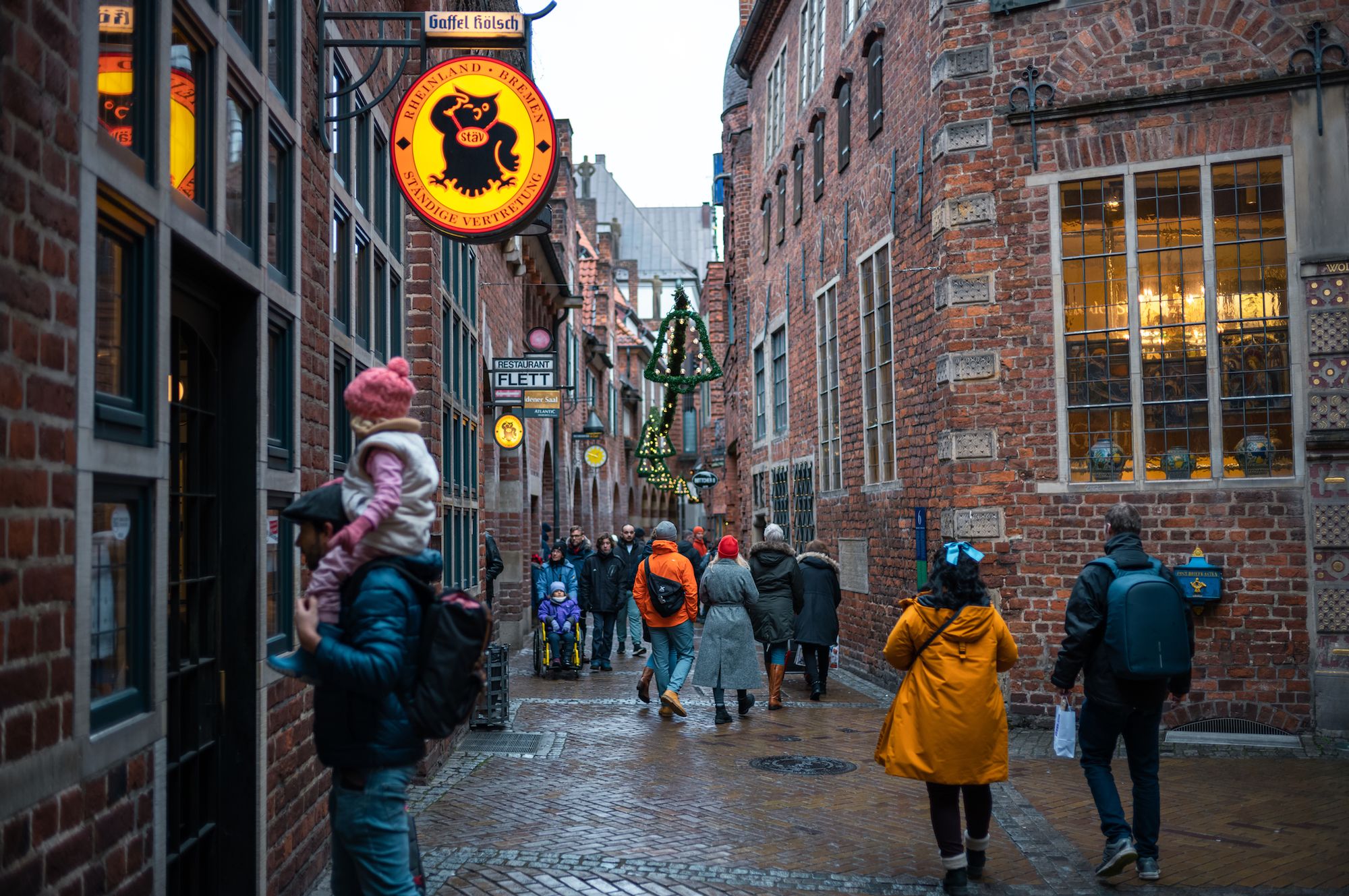
Initially, I always thought Rangefinder meant an optical viewfinder that shows the world as you see it. However, it's entirely different. A Rangefinder is a technology that allows you to measure the distance to a particular subject, and it was so popular that it was later introduced in cameras.
Because a rangefinder lets you find the distance to a given subject, you can focus your lens directly on the subject. From Wikipedia:
A rangefinder camera is a camera fitted with a rangefinder, typically a split-image rangefinder: a range-finding focusing mechanism allowing the photographer to measure the subject distance and take photographs that are in sharp focus. Most varieties of rangefinder show two images of the same subject, one of which moves when a calibrated wheel is turned; when the two images coincide and fuse into one, the distance can be read off the wheel.
The key is these two images. Once these two images line up, the lens is perfectly aligned and focused on the subject.
At the beginning of the 19th century, many popular analog rangefinder cameras existed. Still, nowadays, there is only one significant brand that built analog and digital rangefinder cameras, which is: Leica. Other brands also made rangefinders, but none had the success as Leica.
Second, the optical viewfinder lets you see outside the frames, which is crucial when you shoot with a Leica. Because it lets you compose specific frames that wouldn't be possible with a regular SLR or Mirrorless camera; for example, you can see a moving bus coming into your view and hit the shutter button at the exact moment.
There is one thing more I think it's worth mentioning, which is the art and action of shooting with a Rangefinder camera. It takes time to shoot with a camera, so you must think about what you want to shoot first. You need to slow down sometimes, deliberately. Slowing down, seeing the world through a hand-made rangefinder, seeing the world without any obstruction (no EVF), and framing your picture, all these small motions and details make you appreciate shooting with a Leica. It's pure joy.
When you combine all these reasons, you understand why the Leica M cameras are one of the best for street photography.
Cost and ownership
I know Leica's are expensive.
And I know many people are super sensitive about the pricing, so I want to bring it up front. These machines are too overpriced, and I'm not sure the price justifies the gear. But I'm sure of one thing; they are beautifully created, hand-machined objects. Leica cameras are known for their high quality, craftsmanship, attention to detail, and durability. It's like wearing a well-made mechanical watch. And you would never understand a good watch if you never wore an automatic watch. It's the same with the Leica M's.
Leica produces the best lenses you can buy. Their high-end prime lenses are most of them sharp across all F-stops. What does it mean? Usually, if you buy a lens with a particular focal length and widest Aperture, say 35mm f/2.0, what it means is that it's super-sharp, usually around f/5.6, and soft when wide open at f/2.0. But that's not the case with Leica lenses. Leica has the mission to provide the same sharpness across all F stops. And this quality comes obviously with a price.
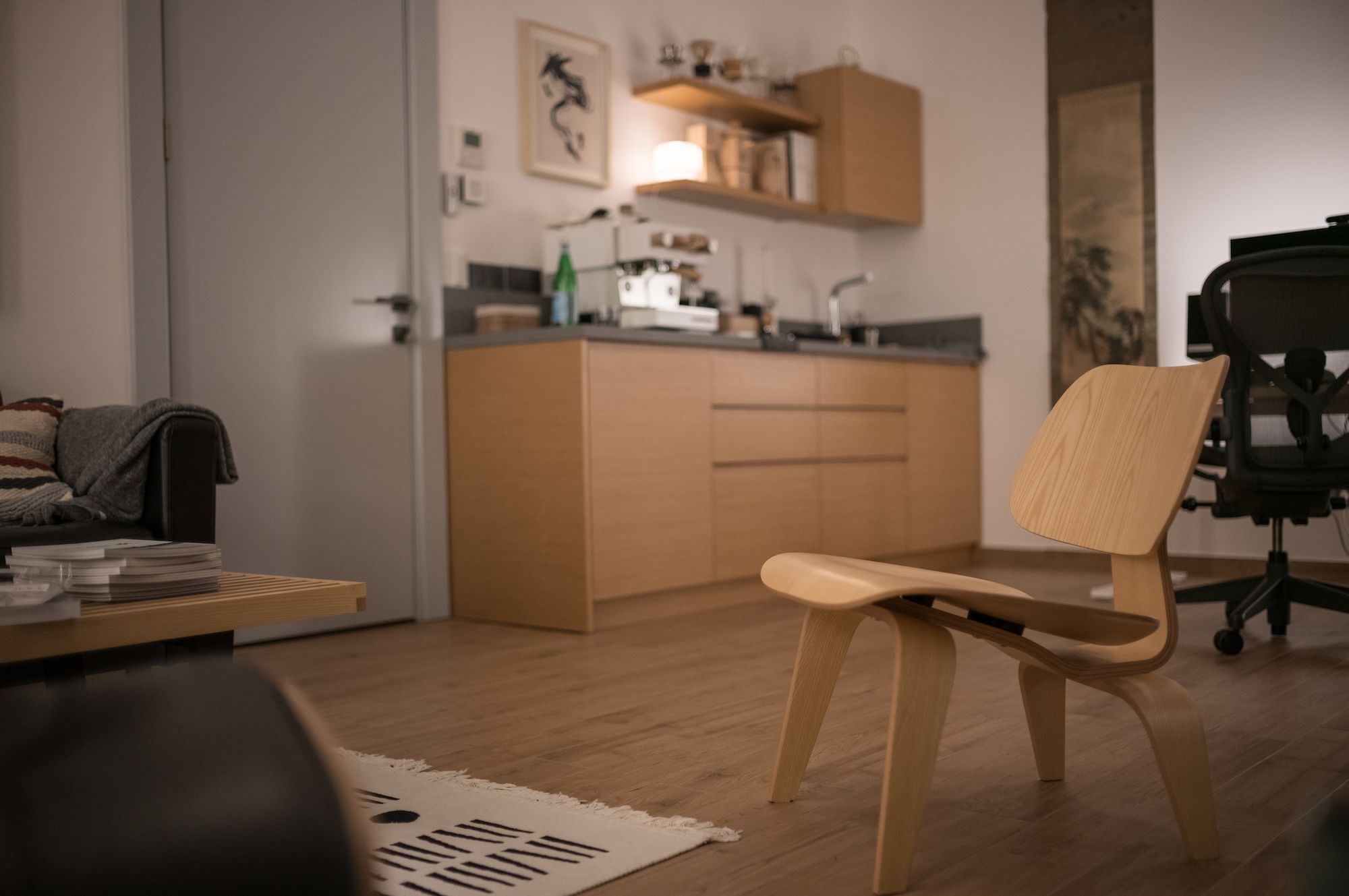
Most of their equipment is assembled manually in Germany, inspected thoroughly, and fitted perfectly together. The customer service is exceptional, and the people there are proud of their work. Leica has a long history and reputation for producing some of the best cameras in the world. They are also a relatively small company compared to other camera manufacturers, contributing to the higher cost of its products.
Is a Leica worth it? Maybe not. But for me, it's worth it. Not price-wise, I think they are still expensive. And I only could justify it recently, given that I waited almost a decade. Yet, they evoke certain feelings, and once you start using them, you understand why they are so expensive. People pay for things that are way pricier, such as expensive, beautiful cars, but use them less than a camera.
And it's usually not an issue if you buy a car or an iPhone yearly. So, that's also something to keep in mind: a price is very subjective. It changes according to society's view of whether it's "expensive" or not. It's been a long time since I've been at peace buying stuff, especially goods built by master craftsmanship and having attention to detail. You pay what you get, and with all things in life, this changes a lot about what you value in your life. I respect people who think like me and still believe in quality, and I'm more than happy to support these businesses.
Second, Leica gears hold their value for a long time. Their previous generation M10-R still sells for $5-6K. The lenses never go down; with time, they gain value. So, the Leica M system's initial investment is very high, but once you're in, the ongoing cost or getting out of it isn't that expensive anymore. There is a massive community of second-hand Leica gears; typically, the Leica stores also easily change/upgrade to newer versions. It's easier to upgrade or sell existing Leica gear if you treat them well because people in the Leica community are proud to use them and take the extra step to protect their equipment.
If you're interested in more content like this and notified of my latest essays, subscribe to my blog:
Accessories
The M11 has various accessories you can buy. I've discovered that the Leica community is full of hand-made artisan shops that produce different cases, straps, etc. It's incredible to see this kind of dedication to the craft.
It's not only the artisan community; Leica also sells all sorts of accessories. But what is insane is every single item is custom painted or made that match perfectly with the camera body you use. As an extreme example, the Thumb Grip you can buy for the Leica M10 and Leica M11 are the same models. However, the black painting is different in each model because the top of the M11 is made of aluminum, but it is brass on the M10 (their previous model). Hence, the black color's reflection or feel is unique. The attention to detail here is on an entirely different level than I've experienced so far.
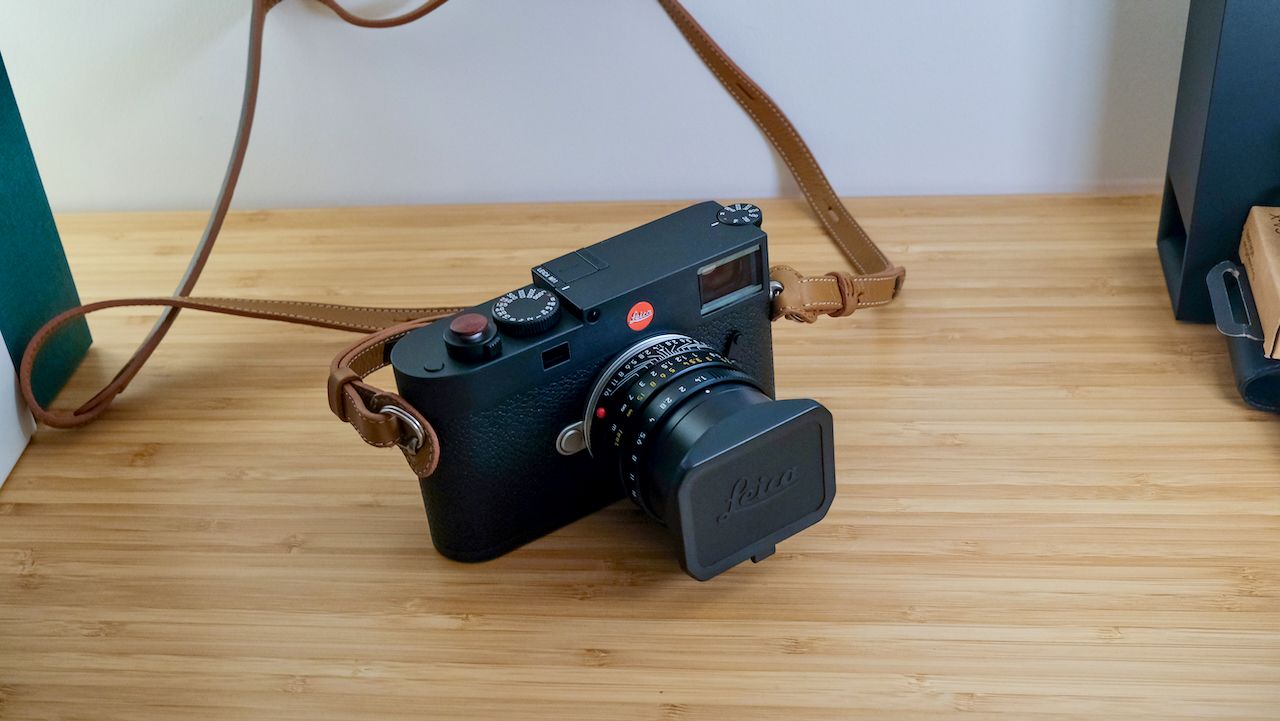
I didn't buy any thumb grip or half cases this time, and I wanted to use it bare-bone and understand how it feels. These are some of the accessories I got:
- I decided to get a nice Leather Strap and chose the original Leather Strap from Leica in Cognac Brown. The beauty of this strap is that it's well-made, has no metal pieces (zero probability it'll scratch the body/lens housing), and is adjustable. I initially thought about going with my loved Peak Design Straps, but I've discovered that I always hang around my camera. Second, I believe a Leica looks much better with a leather strap.
- My soft-release button isn't new; I'm using the old, wooden soft-release from my X100V. It works well and does the job for me. However, I will probably replace it with a dark, black version.
- I always put a UV-Filter in front of the lens. For the M11, I got the UVa II, E46 from Leica. I don't affect the image quality at all, but it protects the front elements of the lens. Not only that, but I can easily wipe and clean the filter, buy a new one and replace it if anything goes wrong.
- As I do with every camera I buy, I bought several cheap screen protectors from Amazon. You can buy four pieces for like $10, so you can use the others even if you make mistakes during the installation.
- Lastly, I bought a Sandisk 128GB Extreme Pro SD Disk. What great about the M11 is it already comes with internal 64GB storage, so you don't need an SD Card. But if you put an SD Card, you can use it for backups! Or you can customize it to your liking, such as saving JPGs to the internal storage and RAW (DNGs) to the SD card.
My M11 camera settings
I take photos from F1.4 to F8; I sometimes go up to F11 but never exceed it. Hence, I shoot in aperture-priority mode, which means I tell my camera the highest ISO I'm willing to use (which I set to ISO 6400). The camera automatically changes the ISO and Shutter speed to shoot in my desired exposure setting. I also made sure, up to ISO 6400, the shutter speed never exceeds 1/250s. I think that's the minimum I can use because the slower the shutter speed is, the harder it is to shoot people in motion. It doesn't sound straightforward, but it's easy to understand once you get the feeling. For the record, I used a similar setting with my X100V.
Let me give an example of how it would work during the day and night:
Day: Because it's not dark outside, assuming the sun is shining, the camera probably will choose the lowest ISO, which is ISO 64, and then shoot in 1/250s. Of course, depending on the light, the shutter speed will increase and might go up to the maximum of 1/4000s.
Night: It'll keep the shutter speed to 1/250s and gradually increase the ISO to 6400. If it's still insufficient, the camera will start to decrease the shutter speed, so 1/125s, 1/60s, 1/30s, etc. During the night, it's essential to have several fallbacks. One is to bump the ISO further and take a hit for some noise/grain. The M11 is superb at it, and I usually go up until ISO 12800. Second, shooting wide open, so F1.4 is also essential. We want to make sure to get as much light as we can.
Some other settings:
- Standby is set to 60 mins. My camera is always on.
- I always shoot in RAW.
- I shoot with the maximum available sensor resolution, which is 60MP. This allows me to future-proof my picture (especially for printing) and, most importantly, crop pictures.
- EVF is set to -2/3v. I use Highlight-weighted metering, so I underexpose a little bit. This way, in post-processing, I can recover the shadows and don't have to play around with highlights. It's insane how much detail you can recover from a RAW file of a Leica M11. Let me show an example side by side (especially take notice of the tree that appears suddenly):
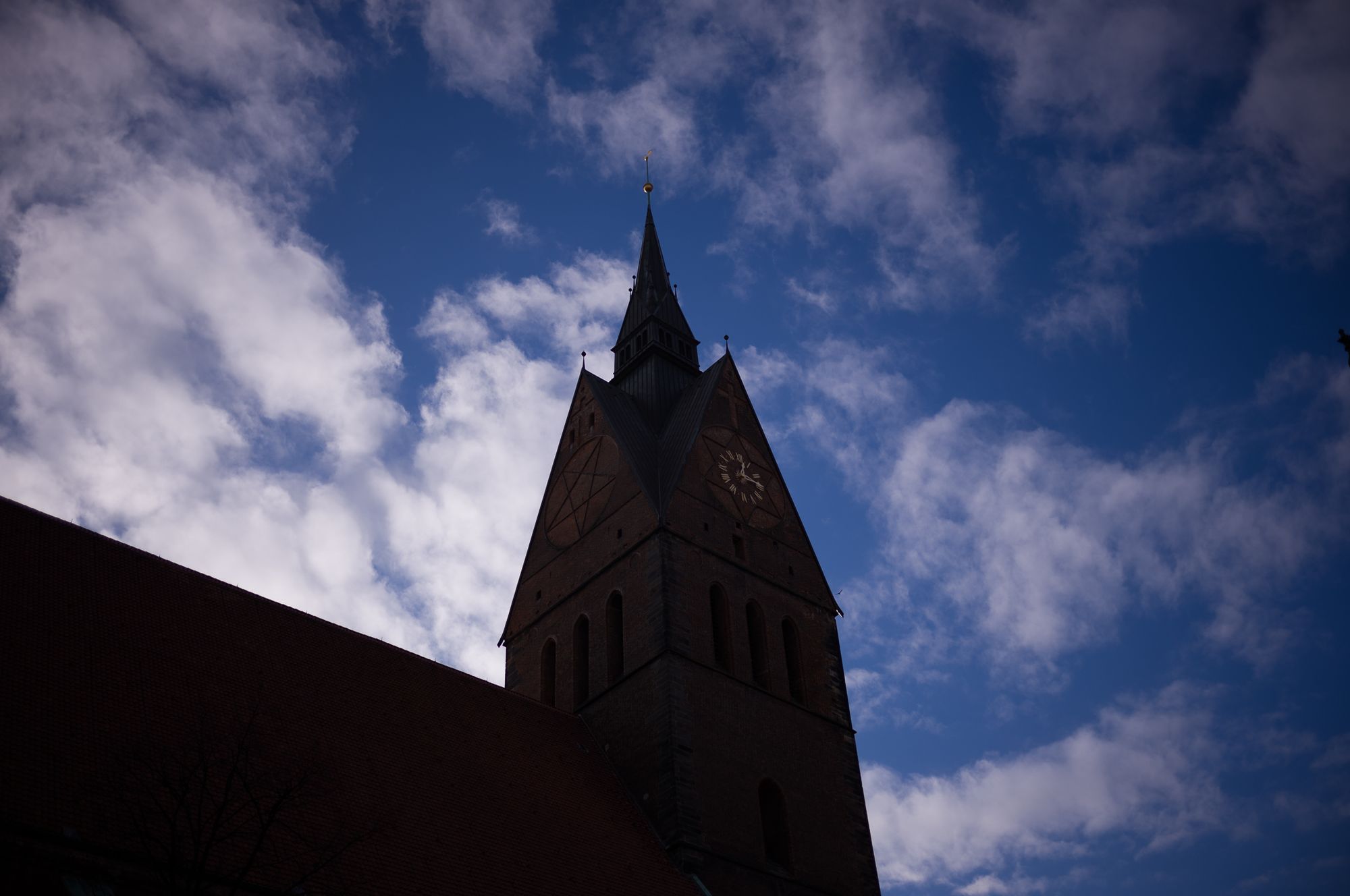
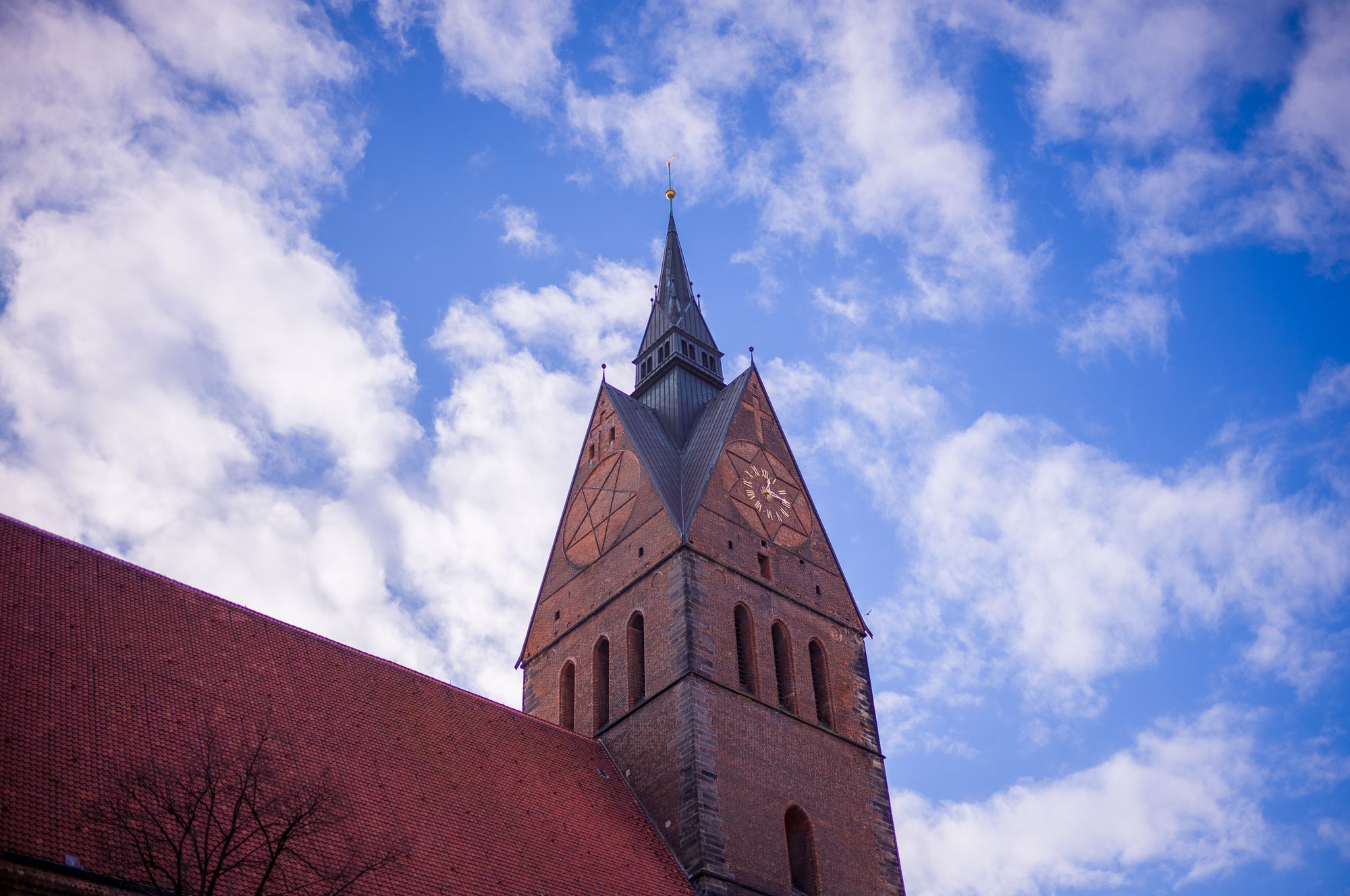
Left RAW photo, right processed on Lightroom. The Benefit of Highlight-weighted metering is you can quickly recover the shadows. - (ISO 64, F/1.4, 1/12000s)
Photo Workflow
With the Leica M11, I've decided to change my photo workflow. First, this was my previous workflow:
- Shoot JPEG with the Fuji X100V
- Import all photos directly into Apple Photos
- Cull and delete bad photos from within Apple Photos, Favorite good ones
- Post-process favorite ones with Pixelmator Photo.
Because Fujifilm JPEGs are so good, I've learned to know the ins and outs of the Fujifilm X100V; hence I never shoot RAW with it. Pixelmator Photo worked well with my workflow because it provided some functionality Apple Photos lacks, such as removing spots.
With the M11, I decided to change and also improve my workflow. So, this is my new photo workflow:
- Shoot RAW with the M11
- Import photos into Lightroom CC
- Cull and delete bad photos, and post-process good ones directly inside Lightroom
- Select all processed photos, and save them to the Apple Photos Camera roll as JPEGs
By using this new workflow, I have the following benefits compared to the old one:
- Leica RAW files are the golden standard. It's insane how much detail you can recover, and it would be dumb not to use RAWs.
- Lightroom's Photo management and post-processing capabilities are significantly better than Apple Photos. I have the 2TB plan, which also helps me to sync the photos so that I can edit/post-process them from my iPad, iPhone, or MacBook Air.
- I still use Apple Photos to sync all my photos across all my devices; by exporting JPEGs to Apple Photos, I keep the final picture.
Furthermore, I'm planning to write a dedicated blog post about my workflow with more details.
Leica M11 vs. Fujifilm X100V
Numerous people have asked what the difference is compared to my previous X100V camera.
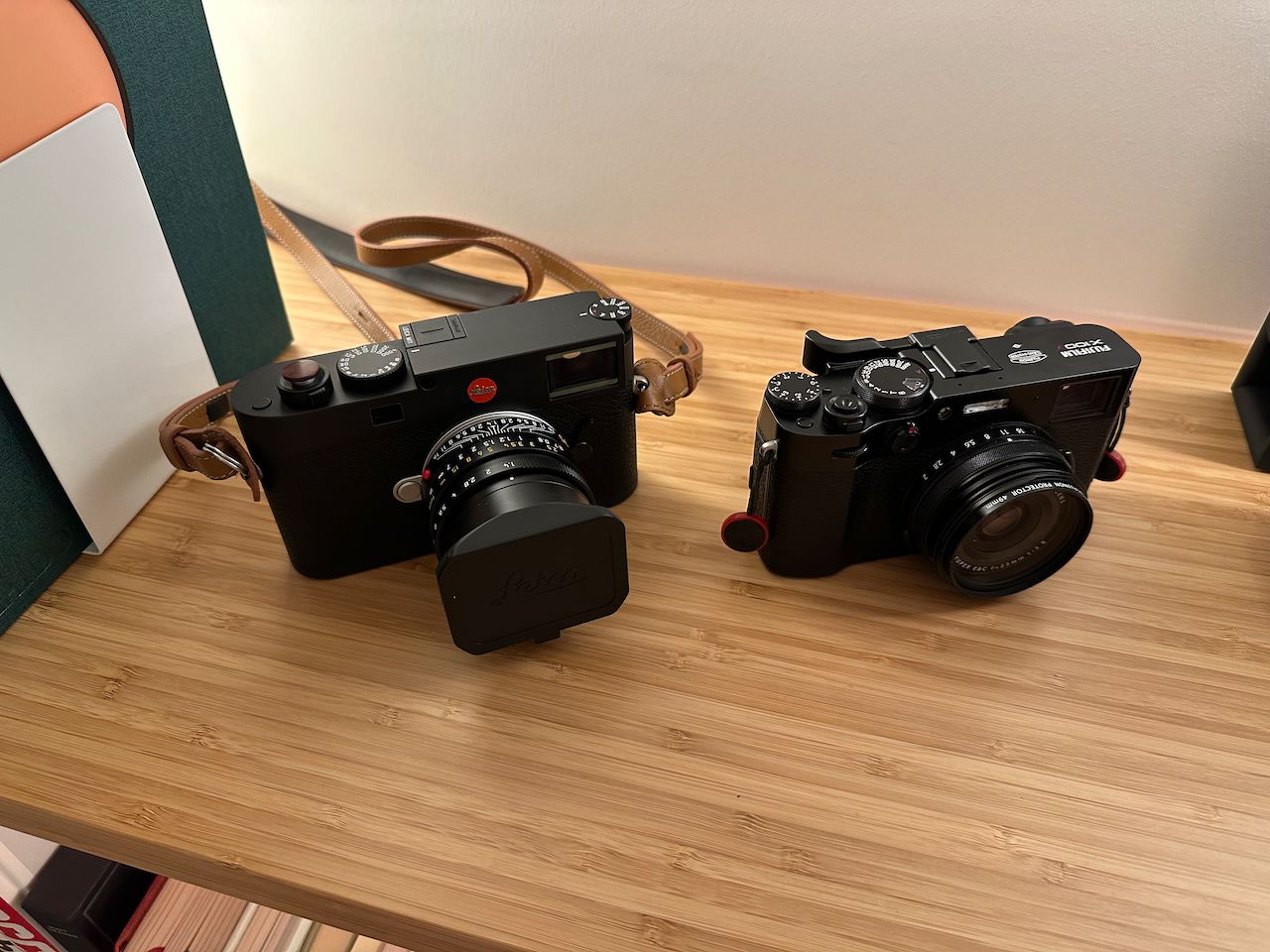
Here are some bullet points that I've gathered so far:
- M11 is heavier. I sometimes miss the lightness of the X100V. However, I'll have to say, the extra weight also increased the stability while shooting photos, and you get used to it. So, it doesn't bother me a lot.
- M11's menu system is notably better than Fuji X100V. It's nicely designed, and I can see everything at a glance. It's beautiful.
- I miss the EVF in the X100V, and the M11 doesn't have an integrated EVF. However, one can purchase an external EVF or use the LCD. I know it's probably not possible with the Rangefinder system, but I'm hoping Leica does some magic for the future bodies and release an M12 or M13 with an integrated EVF.
- The manual focusing system on the M11 is miles ahead of the X100V. It's faster, it has dead-ends between 0.7 m and infinity, so the focus ring is easy to guess. With time, I'll assume I will remember the distance by moving the focus ring. Many people wrote that once you get the feel of it, you can focus faster than any autofocus.
- I like the Leica FOTOS (iOS/iPad) app more than the Fujifilm Cam Remote application. The Leica is better designed, and the UI is remarkably better than the Fujifilm ones. Of course, both can be better, and I think there is still some space for improvement.
- The X100V turns on faster; it takes 1.5-2 seconds on the M11. However, I never turn off a camera; it's always on, ready to shoot once I'm out in the field. The Leica M11 also has a standby setting, which I set to 60 minutes. I used this setup for several days and still had a battery left.
- The battery on the M11 is bigger and lasts longer. I didn't buy a spare battery because a single charge lasts me for a full day, sometimes even two days. The X100V's battery also wasn't bad, and I could use it for a day with no issues, but you have extra peace of mind with the M11.
- The build quality of the X100V was already great, but the M11 is on an entirely different level. The moment you hold it in your hands, you can feel that it's different.
- The M11 doesn't have video, autofocus, builtin-flash, EVF, and a built-in ND filter. It's only built to shoot photos, and you'll have to focus manually. On paper, the X100V has many more bells and whistles. If any of these are essential for you, the M11 is not the right choice. But in my case, I never used the video; I was using the X100V already in manual mode with zone focusing; I rarely used the built-in ND filter, and I never used the flash. The only thing I miss is the integrated EVF. The X100V has the upper hand here.
- The M11 has a full-frame sensor, and the X100V has an APS-C sensor. The pictures from the M11 are undoubtedly on a different level. Especially paired with the Summilux F/1.4 Lens. I don't know how to describe it, but they are sharper, the bokeh is more creamy, and the colors are more accurate. The X100V has a different style, and I think they both have their place. The X100V's JPEG simulations, for example, are a huge thing. Whereas with the M11, you need to post-process the photos to create the various film simulations. But still, every time I post a photo from my Leica, people ask what camera I use. People are astonished and stuck by the pictures, which shows how good they are.
Communities and Resources
Leica also feels like a cult. When you buy a camera or lens, you also buy an entry into this cult. This, of course, applies universally to almost everything. People like to be surrounded by like-minded people with the same taste.
While learning more about Leica, I also stumbled across some great instructors and Leica users. I also want to share some communities as I think they are very informational, and I learned a lot.
- Leica Forum: This forum has two sections, one in German and another in English. But I noticed that it’s the most active and largest Leica forum. You can find almost anything here. It has sub-forums for each Leica camera body and variouIt'sher topics. It’s a must for any Leica enthusiast.
- DPReview, Leica Talk: This is a sub-forum under the DPRewiew umbrella. It’s a typical DPReview forum with knowledgeable people, newcomers, and trolls.
- /r/Leica: The Reddit subreddit feels like the original Leica Forum. It’s full of Leica lovers; everyone is helpful, and it can feel very active.
- LFI: This is a photo gallery where users can post their photos and a magazine that dates back to 1949. You can subscribe digitally or get a printed subscription, giving you access to the backlog catalog. I’ve read a few magazines (it’s free for three months for every Leica gear purchase) and have liked it so far.
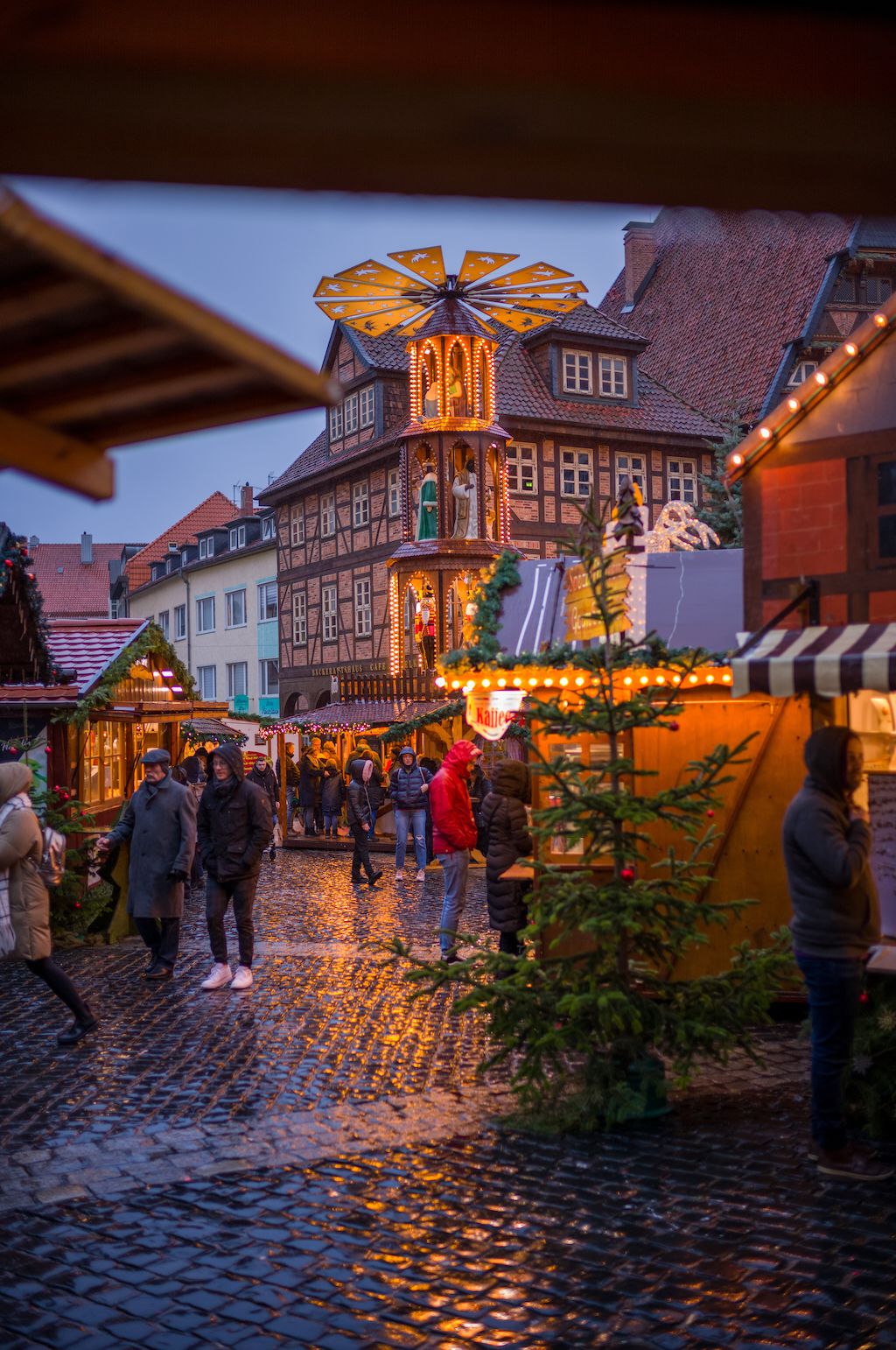
Beside these Forums, I’ve found two YouTube channels beneficial. They are not very active, but they have a vast selection of very high-quality videos about Leica:
- RedDotForum: This channel is hosted by two of the employees of Leica Miami Store, and they have hours-long Q&A’s with a lot of helpful information. It’s one of the dense channels I’ve ever seen. I probably watched all their videos one by one because they know what they were talking about.
- Leica Camera Australia: I recently discovered this on Twitter thanks to a follower, and it became another favorite of mine. I started slowly consuming their excellent set of videos.
There are many great Leica photographers, some that piqued my interest so far:
- Matt Stuart: London based. Has several books on Street Photography and a distinct style.
- Alan Schaller: London based. He has some of the I've B&W photos I’ve ever seen.
- Siegfried Hansen: Hamburg based. A great person with a distinct style (i.e., lines)—lots to learn from.
- Craig Mod: Tokyo based. Great writer. He does days-long solo walks across Japan and documents his journeys via newsletters and book (disclaimer: I’m a Member and support his work)
Verdict
I’ve been using the Leica M11 for almost two weeks, and I know it’s not long, but I can say that the Leica M11 is currently the best camera I have ever used. It’s just pure joy, and I can’t wait to take it with me on field trips. The camera wants me to walk around the streets and take photos.
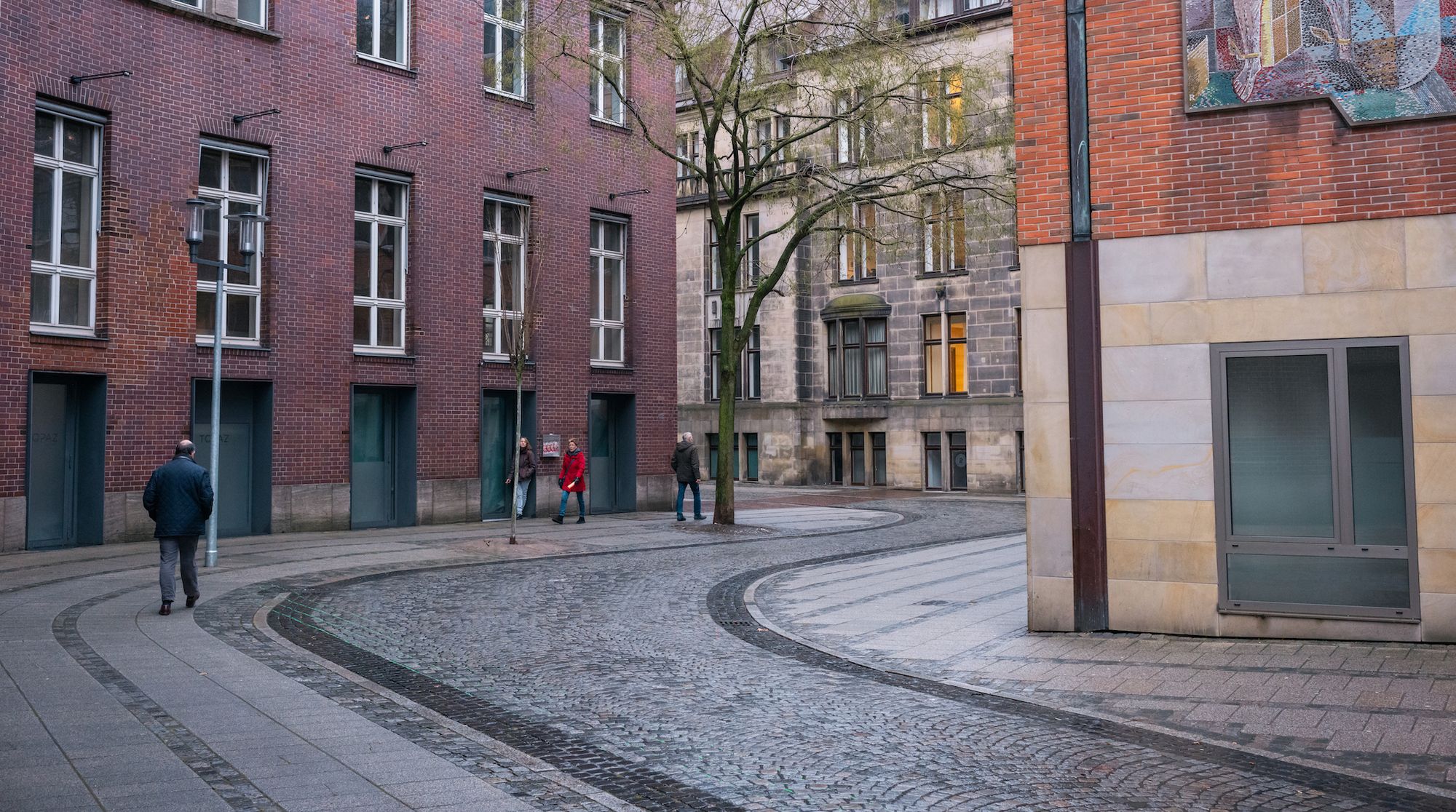
Whether it is worth it is a scorching topic and very subjective honestly, I don’t know how to answer it.
You should probably avoid a rangefinder if you don’t know what an Aperture is or have never shot with a professional camera. If you want to shoot objects that are moving fast (i.e., babies, animals, cars) or far away (i.e. wildlife, sports), I think it’s also not worth getting a Leica M camera.
But, if you already use a professional camera for years, you take pride in your work, you like to shoot the everyday life of your surroundings, you want to slow down and take photos just for fun, and if you think all this is worth the money for an excellent camera, then I think you would love to shoot with a Leica M camera.
As for me, I love it.
